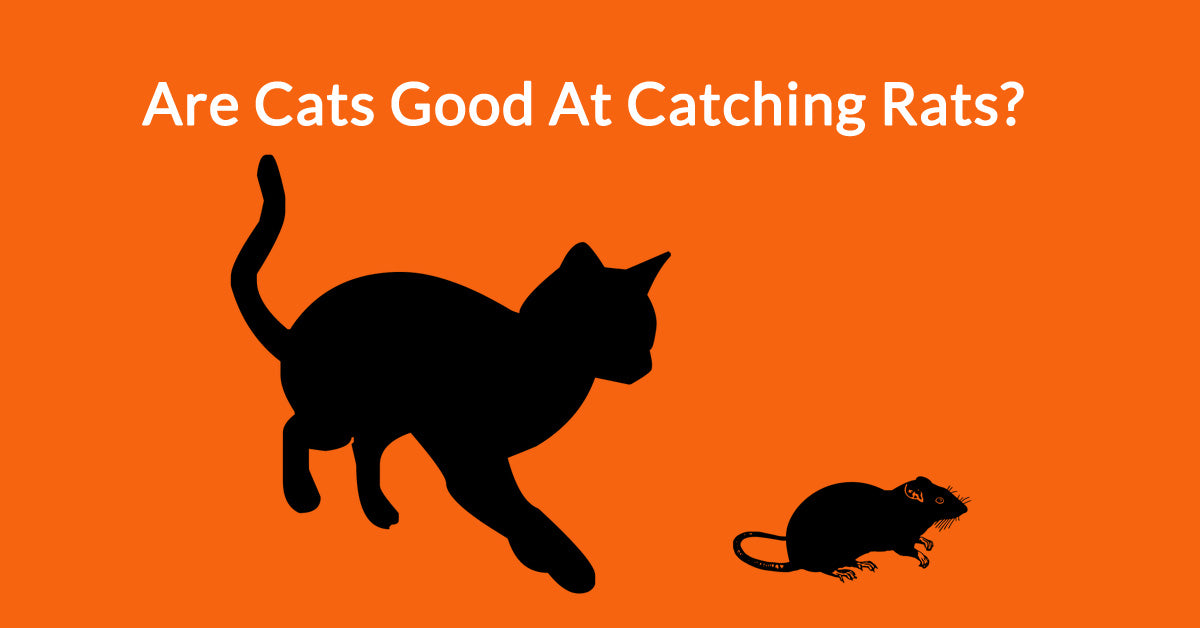
Are Cats Good At Catching Rats?

Everyone knows that cats and rats are mortal enemies. These large rodents are even held up as one of the reasons why cats became domesticated in the first place. The story typically holds that humanity's early agricultural efforts attracted large numbers of rats. Cats were in turn attracted by the chance to hunt down all the rodents they could ever hope for. It's thought that over time humans saw how well cats could keep the rodent population at bay.
Cats, meanwhile, benefitted from humans helping them through rough weather or periods where food was scarce. This partnership is said to have been so beneficial that cats eventually became domesticated. It's a nice story but you have to wonder how much truth there is to it. Is a cat really as good at hunting a rat as we assume? And if you have a rat infestation can you simply count on the family cat to take care of it?
The Larger Problem With Assumptions
Questioning a cat's ability to kill a rat may well be shocking to pet owners. Outdoor cats tend to offer up significant evidence of their hunting prowess over time. It's a rare cat owner who hasn't seen their cat carry back a dead animal at some point. But this is also one of the reasons why people should reconsider the relationship between the cat and rat populations. Pet cats typically bring gifts of birds or mice back to their owners. It's quite rare for cats to bring a rat back in the same way that they would a bird or mouse.
If people notice the trend, they often simply assume cats don't feel like dragging the larger mass of a rat back to their home. People often display a similar logic when they suggest that a lack of rat sightings in an area is due to their cat. It's quite common for cat owners to assume that their pets are killing off the rat population when humans aren't around to see it.
When people fail to see this hunting take place, then they assume it must be happening when they're not around. But what if this lack of visibility is actually due to cats simply not thinning rat populations in the first place? Thankfully researchers have put this question to the test.

The Cat, Rat, and Scientific Method
In 2017 Fordham University ran a study on rat pheromones. The study involved the use of concentrated rat scents which screamed out to sensitive noses that rodents could be found within the team's recycling center. This caught the attention of the rat population the team was studying. However, the smell of the rodents also caught the attention of the area's population of feral cats.
The researchers decided to include the uninvited guests in their study. The team's mission now had a secondary objective. They wanted to carefully track how cats would relate to a known rat colony. These researchers wondered just how many examples of cats catching rats they might observe. Would the cats totally destroy the rat colony or would the two species engage in a long standing game of cat and rat? The researchers carefully recorded interactions between cat and rat for 79 days. And during this time the study would provide some shocking answers.
Surprisingly Small Numbers Raise Some Important Questions
At this point you may be imagining how often your own cats play with their toys. Cats love to engage in play hunting when they have the opportunity. You'd assume that cats near a real rodent population would be hunting all day whether or not they were even hungry. Cats seem to hunt as much for entertainment as sustenance.
The study counted every single stalking attempt from the cats during the 79 day study. During this time the cats only engaged in twenty stalking attempts. What's even more surprising is how poorly those attempts went. Only two of the twenty stalking attempts from the cats proved successful.
Different Behaviors Within Similar Species
The cat's numbers don't hold up very well with people's expectations. You may well imagine a building full of very frustrated cats who continually pined for their opportunity to strike. However, in reality the cats mostly ignored the rats. This runs contrary to almost everyone's expectations about a cat's role in rodent control.
Why were the cats so ambivalent about the rat colony? After all, pet owners commonly see their cats bring home mice they've successfully hunted down. Why were feral cats, who should be better hunters than house cats, so uninterested with the rat colony? It's probably a matter of size.
People often forget just how much bigger a rat is than a mouse. Adult mice typically weigh about 30 grams. But an adult rat can weigh up to 650 grams. Even the smallest adult female rat will seldom weigh less than 350 grams. This means that the smallest adult rat weighs over ten times as much as the average adult mouse.
It's little wonder that a cat would find himself intrigued by the smell of a rat. The mouse and rat are both rodents. The two species look and smell quite similar to each other. But a cat looking for a mouse would be in for quite a surprise after he catches sight of a rat. Imagine looking for your cat and instead finding a lion in his place. This isn't too different from what a cat finds when he goes looking for a mouse and instead finds a rat.
A rat is large enough to ensure cats know that they're in for a fight. Feral cats in particular have probably had more than their share of dangerous confrontations on the street. A feral cat understands just how rough a fight with larger animals can be. As such, they're going to be understandably cautious about hunting anything comparable to their own size. A rat is smaller than a cat. However, the size difference is far less extreme than with a cat and mouse.

More Subtle Aspects of Cat and Rat Interactions
In the end, it appears that cats catching rats is more myth than reality. Cats are quite good at hunting mice when the opportunity arises. And cats are certainly intrigued by the presence of a rat colony. But a cat investigating a rat is probably hoping to find a mouse. When they instead discover a rat, they know it's a whole other type of hunt. Instead of a weak and nearly defenseless mouse, the cat has found a larger animal who can fight back. Most cats simply won't find it a worthwhile gamble if they have any other option for food.
This doesn't mean that cats are entirely useless for rat control efforts. The researchers found that the feral cats weren't very interested in hunting any given rat. However, the cats were attentive to their environment. A rat would almost certainly see these large predatory animals on the hunt. The cats didn't want to risk a fight with the rat population. But at the same time a rat doesn't want to risk a fight with a cat either. The researchers noticed that as the cat population increased the rat population was becoming more wary. Every cat sighting resulted in a rat being about 1.19 times more likely to seek shelter.

Using This Information to Control Rat Populations
Although cats aren't a great hunter of rats they can act as a deterrent and influence rat behavior.
If you see a rat it's extremely important to act as soon as possible. The longer you wait to deal with a rat infestation the longer they have to breed. Traps are often the best way to deal with a rat control problem. And the presence of cats will make a rat more likely to seek out the type of shelter suggested by traps. This means that a cat isn't a very good rat control method on his own. But a cat can be a great way to scare rats away from open areas and funnel them into your traps.
- Choosing a selection results in a full page refresh.
!

